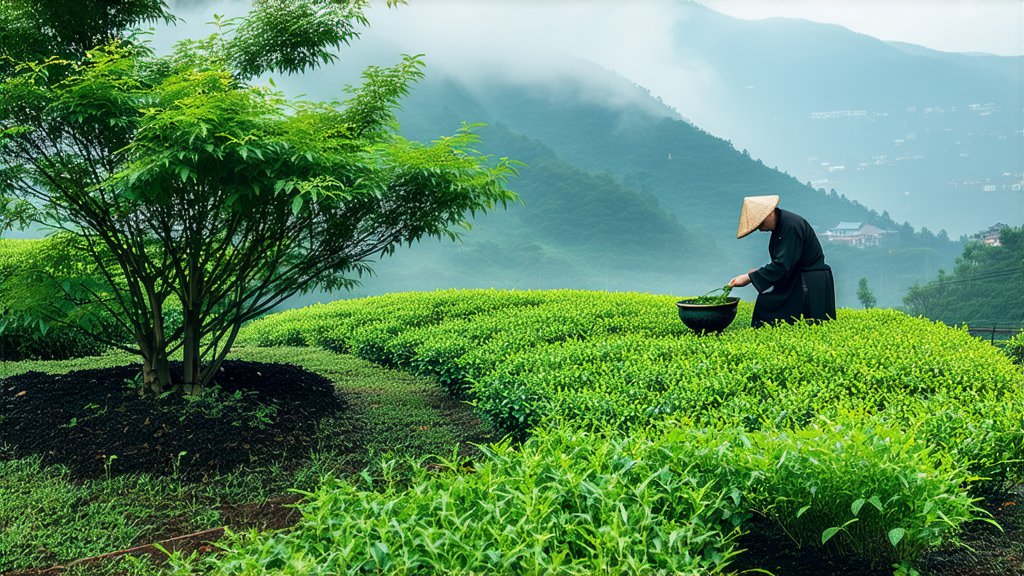
Longjing Tea, also known as West Lake Dragon Well Tea, is one of China's most revered and iconic green teas. Originating from the beautiful West Lake region of Hangzhou, Zhejiang Province, this tea has captivated tea enthusiasts around the world for centuries with its exquisite flavor, aroma, and appearance. In this article, we will delve into the rich history, varieties, production process, and tasting techniques that make Longjing Tea a quintessential representation of Chinese tea culture.
Historical Background
The history of Longjing Tea dates back over a thousand years to the Tang Dynasty (618-907 AD), although it gained significant prominence during the Qing Dynasty (1644-1912). Legend has it that the tea was named by Emperor Kangxi after witnessing the spectacular sight of dragons playing in the West Lake's well waters. Over time, Longjing Tea became not only a symbol of imperial favor but also a treasured commodity among common folk, celebrated for its health benefits and refreshing taste.
Varieties of Longjing Tea
Longjing Tea comes in several distinct grades, each offering unique characteristics and flavors. The primary classifications are based on the time of harvest and the quality of the leaves:
- Pre-Qingming (before April 5): This is considered the finest grade, featuring young, tender leaves with a delicate flavor and vibrant green color.
- Qingming to Guyu (April 5 to April 20): These leaves are slightly more mature but still maintain high quality, offering a balanced taste and aroma.
- Guyu to Xiazhi (April 20 to May 5): This category includes later-harvested leaves, which tend to have a stronger flavor and are often used for blending or producing lower-grade Longjing.
The Art of Longjing Tea Production
The production of Longjing Tea involves a series of intricate steps that preserve its natural qualities and enhance its unique attributes:
- Hand-Picking: Only the youngest leaves and buds are carefully selected, ensuring optimal freshness and quality.
- Withering: Freshly picked leaves are spread out to wilt, allowing them to lose excess moisture and become pliable for shaping.
- Pan-Firing: This is the hallmark of Longjing Tea production. The leaves are heated in a flat pan over high heat, which halts oxidation and gives the tea its characteristic flat shape and glossy finish. Master tea makers skillfully toss and turn the leaves to ensure even heating.
- Shaping: Using skilled hand movements, the tea leaves are shaped into their distinctive flat form, resembling the shape of a dragon’s well or ancient Chinese spearheads.
- Drying: Finally, the shaped leaves are dried to remove any remaining moisture, ensuring longevity and stability of flavor.
Tasting Longjing Tea: A Sensory Experience
To fully appreciate the nuances of Longjing Tea, follow these steps during a traditional tea ceremony:
- Warm the Tea Ware: Begin by rinsing the teapot and cups with hot water to warm them up and enhance the tea's aroma.
- Measure the Leaves: Typically, use about 3 grams of Longjing Tea per 150 ml of water for the best balance of flavor and strength.
- Steeping: Pour hot water (around 80°C or 176°F) over the leaves and let them steep for approximately 1-2 minutes. Avoid over-steeping to prevent bitterness.
- Observe: Take a moment to admire the bright green hue of the brewed tea and the elegant dance of the leaves in the pot.
- Sip and Savor: Taste the tea slowly, allowing its subtle sweetness, vegetal notes, and umami undertones to unfold on your palate. Pay attention to the smooth texture and clean finish.
Health Benefits and Cultural Significance
Beyond its delightful taste, Longjing Tea is cherished for its numerous health benefits. Rich in antioxidants, vitamins, and minerals, it aids in boosting metabolism, improving digestion, and enhancing mental clarity. Moreover, Longjing Tea holds a special place in Chinese culture, symbolizing purity, elegance, and the art of living in harmony with nature.
In conclusion, Longjing Tea stands as a testament to the profound depth and artistry inherent in Chinese tea culture. From its storied past to its meticulous production methods and sensory delights, Longjing Tea offers an unparalleled journey for tea lovers seeking both tradition and excellence. Whether enjoyed alone or shared among friends, Longjing Tea embodies the timeless essence of Chinese hospitality and the enduring allure of Chinese green tea.